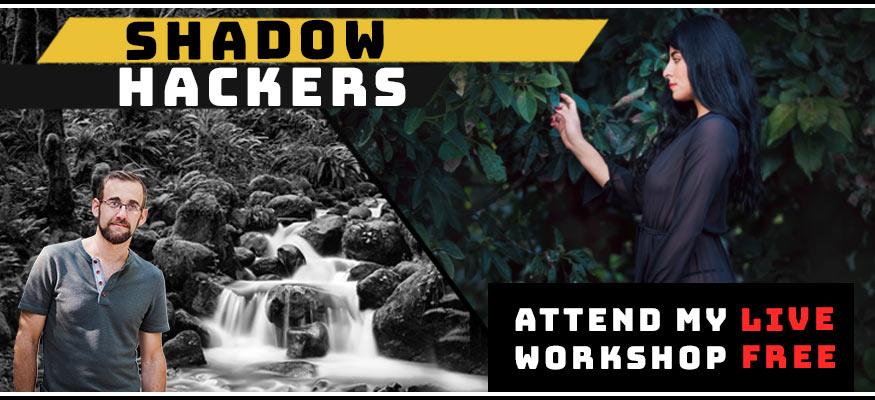by Gavin Seim (updated 07/11): HDR simply means High Dynamic Range. But lets face it. A lot of this HDR looks a lot like clippings from a spoof horror movie. It’s the Flickr HDR. I think this happens because many don’t really grasp what HDR is all about and how to use it well. This includes many HDR software developers. They fall for the fad instead of thinking of it as a serious photographic tool. It’s can be so powerful if used with balance.

Back in the day there was film. Then came digital. Then came HDR. First we merged light and dark images in special ways to get a wider range of light. HDR merging was not perfect and was often overdone, but it could produce beautiful results. Often results that looked edgy and bold. Young guys like me thought we were so cool. Capturing detail that was never seen before.
Then I started looking closer. Studying what the film forefathers had been making for years. Looking at the dynamic range and detail. I realized that HDR was really not so new. Film photography had high dynamic range also and I saw images that astounded me. Images, that had I not been told they were on traditional film, I would have assumed were digital HDR. It helped me realize something.
HDR is not a trend of over-processed, super amped, ultra edgy photos. I think many architectural photographers got this memo, but most others didn’t. I’ve talked about balance in HDR processing for some time, but what I’ve come to further realize and started teaching in Lights & Shadows Workshop is that HDR is about controlling tone. It’s about understand and managing light. Digital in itself does not yet have the dynamic range that film did, so we compensate. Just as a film photographer might have used filters, various film types and chemical process to get dynamic range in their images, we use digital manipulation. HDR photography is little more than the new film.

What I’m getting at is this. I’ll make multi image bracketed HDR’s, if it makes my image better. I’ll make single image HDR, if that’s all I need. I’ll use HDR software to make a full tone-mapped image, it that’s what looks best. Or I’ll fuse multiple exposures to get a milder look, if that’s what give me the result. Sometimes I’ll just do it with channels on a single frame. Other times by blending bracketed layers in PS. It’s about processing for the result I want instead of letting the process dictate the result I get. It’s kinda like choosing a film to give you the look you want. Instead of just blasting away.
I love HDR, but not for the sake of a bad fad. Real HDR is about getting images that have great dynamic range. Not about adding a popular style. It’s about properly capturing and manipulating your light. When I work, my goal is to make a good photograph and whatever tools I need to do that are pretty much fair game. The process to get high range image does not matter. If you have it, you have an HDR. Sometimes I may use my process to get ultra wide range (even more than film could). Other times I just stay subtle and pull a little.
This grungy, edgy, amped, gritty look is not what HDR is, or is going to be. That’s going out of style like every other trending overused effect has in the past. That does not mean the look can never be used, but when the dust settles on trends, they get used where they really fit. Not everywhere.
I’m not downplaying HDR and I won’t stop writing about it. I just want to be clear that good HDR is about learning to manage light, not making a grungy effect. For me, HDR is about managing light and dynamic range on every level. About making that light look great. The tool you use to get there is not so important as the final result. Often the best HDR, will be the one that no one knows is HDR.
Bottom line.
- You need to learn HDR. It’s part learning to manage dynamic range, light and tone in the digital world.
- Proper HDR is simply light management. It’s capturing tone you “need” and making it look good. Not so different than film.
- Passing trends, over tone-mapped images and digital effects are not what make HDR. Generally their just bad photos.
- Cameras will keep getting better, but the best photographers will still need to understand real HDR.

Gavin Seim is a professional Photographer from Central Washington and is host of the Pro Photo Show. Gavin also teaches hands on HDR and dynamic range workshops. More info here.


I’ve found HDR to be a real great thing for my wedding pictures. It is hard to get right though and I still struggle with that. But if you can pull it off, the pictures are like nothing clients have seen before.
i believe that HDR turns back the clock on the thunderous advance of digital filming. Or move forward the clock. Which ever of the instance it will restore filming in all it’s glory. I’m about to finish building a rig with three camera. Yes, three cameras. Light and dark will be restored to their proper places. Catnipblossom-youtube.
Yep, that’s pretty much how many nowadays seem to think in this way, so it seems. Overdone HDR as if that’s just how photography’s done now. It’s always weird to me when folks seem to think this is the “evolution of photography,” when HDR’s been around as a concept almost as old as photography itself.